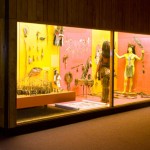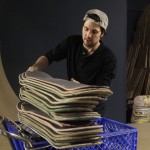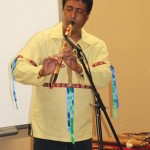Sunny spring days are just about here, but Jordan Sanchez doesn’t mind rainstorms. He’s about to open an indoor skateboarding venue, The
Garage.
He and his wife, Anah, will hold an open house at their downtown Everett business Saturday, giving skaters a chance to check out the new facility. The 3,500-square-foot space is at 2927 Rucker Ave.
Skateboarders will find a long, narrow venue, with a high ceiling and concrete floors. Sanchez, 27, said they are leasing the site from Rick Lapinski, who owns multiple properties in downtown Everett.
The Garage is filled with features, including movable ramps, designed to lure skaters in out of the rain. At one end are quarter-pipe ramps. Wall rides, ledges, hand rails and a surface covered with faux brick called a “sketchy bank,” offer skateboarders the sorts of places they would find at outdoor skate parks or on property that’s officially off-limits.
Jordan and Anah Sanchez also run a coffee stand, the Mocha Station, at Frontier Village in Lake Stevens. To open The Garage, they had a lot of help — more than 100 donors.
In late December, they launched a fundraising drive on the Kickstarter website. Kickstarter, started in 2009, is a platform for people to make a pitch for funding for creative projects. Creators set funding goals and deadlines, then spread the word through friends and social media.
It’s an all-or-nothing deal in which donors make online pledges to projects, which are described on a Kickstarter page. If those pledges reach the creator’s financial goal, donors’ credit cards are charged. If the deadline arrives and pledges fall short, no one is charged and the project isn’t funded.
Kickstarter makes its money by taking a cut. Through his “Open The Garage” page on Kickstarter, Sanchez said, $17,031 was raised by Jan. 27, far surpassing the $15,000 goal. “We ended up with $15,300,” he said, adding that donations ranged from $1 into the thousands.
In his online pitch, Sanchez wrote: “My wife and I are seeking $15,000 to pay for wood, screws, paint, steel, sheet metal and labor to construct a one-of-a-kind indoor skateboarding facility.”
Dan Eyler worked with Sanchez on ramp construction. “They’re all hand-built, with plywood, two-by-four construction, and masonite,” Sanchez said. His brother, Brian Sanchez, and Kyle Schuman painted murals. The place has a couch, music and a soda machine.
Posted on the Kickstarter page is a link to a YouTube video called “Vic’s Market,” which shows Sanchez’s friends skateboarding on Everett streets, in parking lots, at a school and other public places, and on private property around the city. In one shot on the video, an adult is shown telling a skater, “You need to take it someplace else.”
That need — for places skateboarders are welcome to do what they love without breaking the law — motivated Sanchez to open the indoor facility. A skateboarder for 16 years, Sanchez said he is sponsored by Manik Skateboards and BLVD, another skateboard brand.
“This is an alternative to skating in parking lots and other places, which are completely illegal. And it’s rain or shine,” he said.
Skaters will be charged $8 per day at The Garage, or $5 a day with an annual $150 membership. Sanchez said pads and helmets will be provided. Skaters under 18 will be required to have parents sign waivers. The state issued The Garage a business license Jan. 6, and Sanchez said they also have a specialty business license from the city.
The Garage will be available for private parties, and Sanchez said summer camps are planned. A taco truck and free ice cream will be part of Saturday’s opening.
“This was a big group effort,” said Anah Sanchez, 26.
Does she skate?
“No,” she said with a laugh. “I can’t afford to get hurt.” – See more at: http://heraldnet.com/article/20130301/NEWS01/703019919/-1/News#The-Garage











